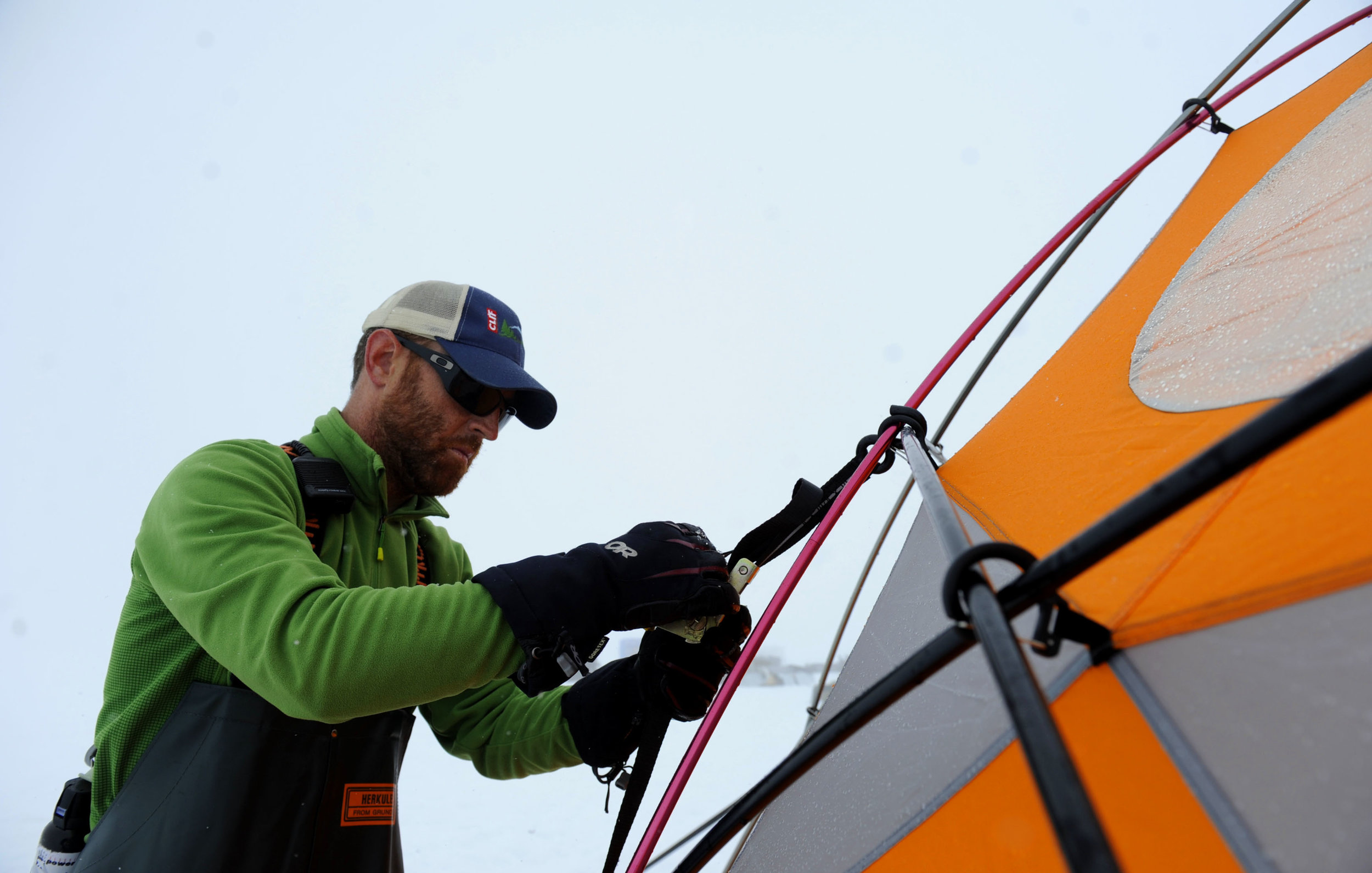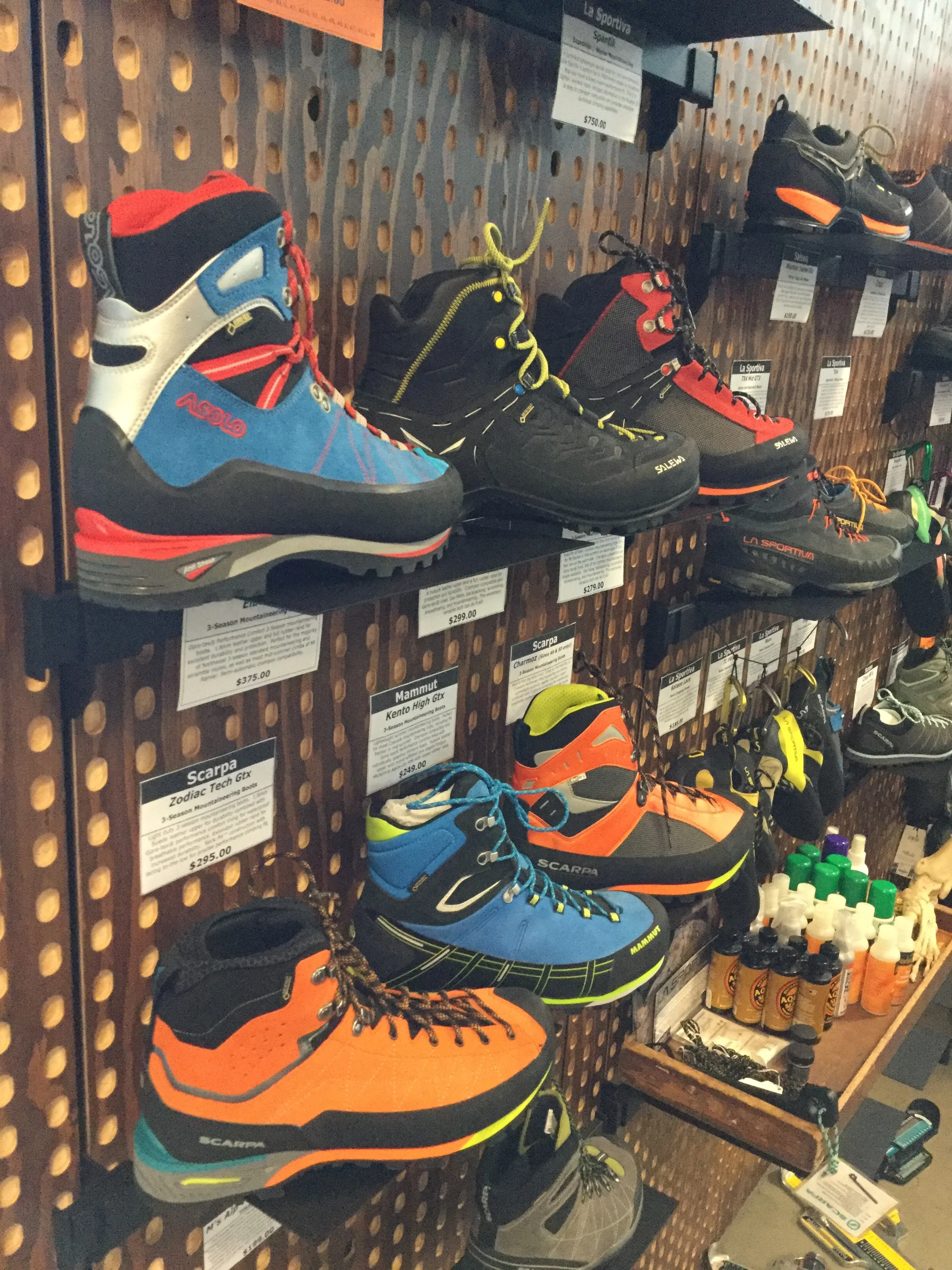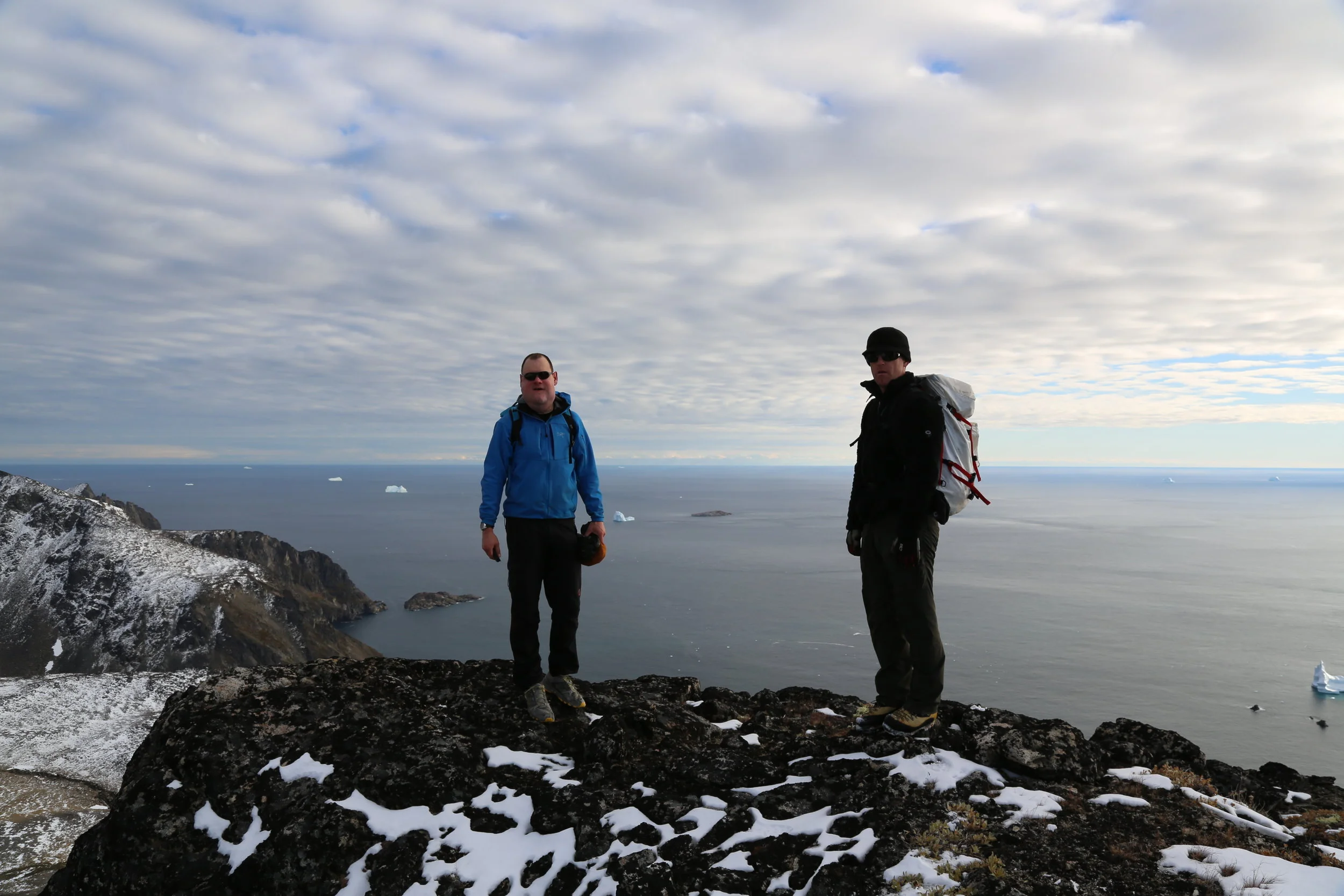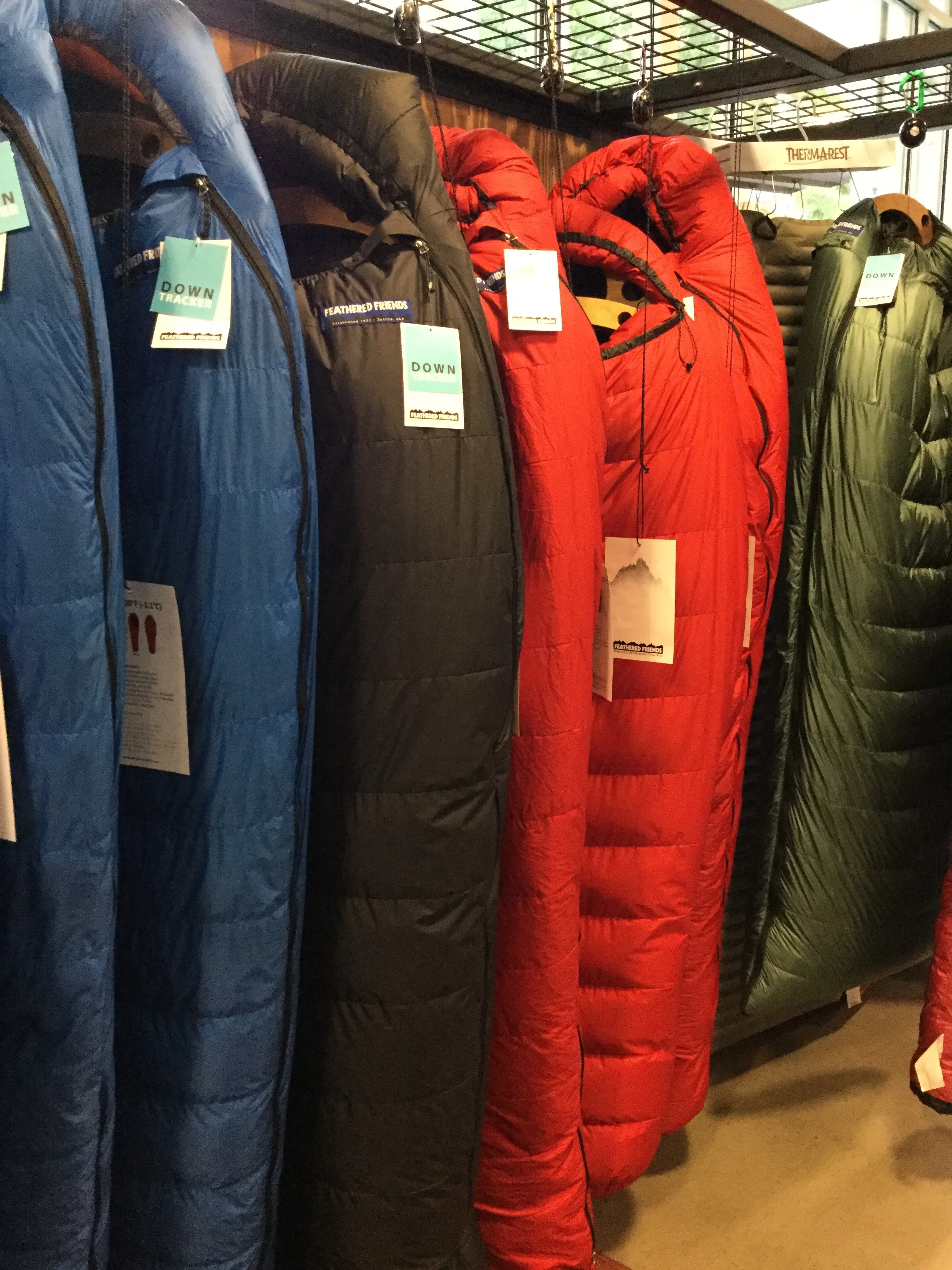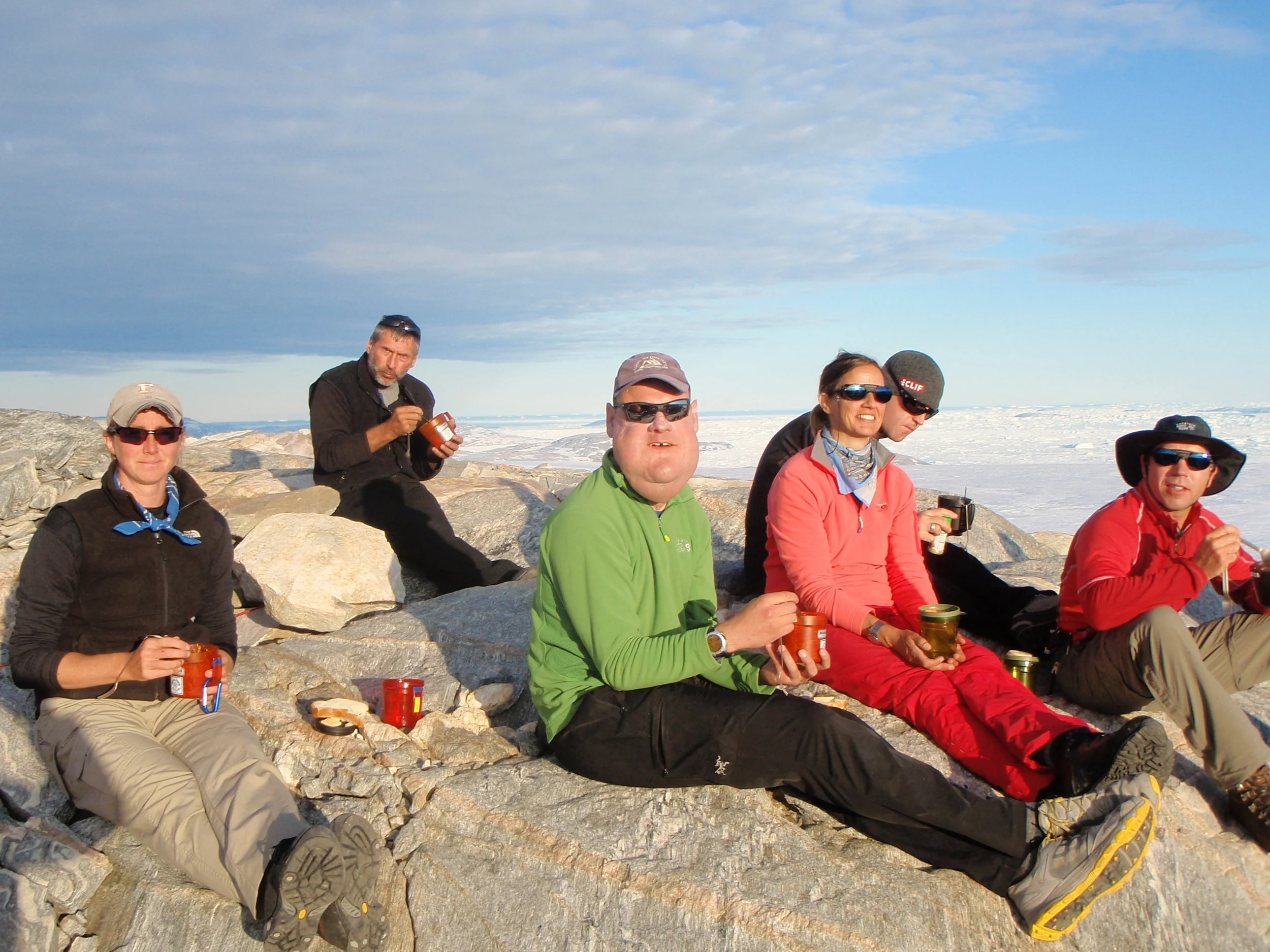Walk into any outdoor equipment store and temptations cry to you from every shelf and wall. Fancy, high-tech gear is everywhere and for a price you can have 50 pounds of the lightest weight equipment money can buy. But let’s focus on the basics: what do you really need for your sport? In my time as a guide and outdoor athlete on three continents I learned a few simple truths. This is one: there are three pieces of gear worth investing in and everything else is secondary. Based on 25 years in the mountains, here is my take on the top three gear choices you will make. Spend your money on these and don’t sweat the rest.
Number one: footwear. For most terrestrial sports, what you wear on your feet defines the quality of the experience more than anything else. Whether it’s skiing, rock climbing, or hiking, your feet are your direct connection to the earth and you must treat them as the top priority. I can’t tell you exactly what model boots or shoes to buy because all feet are different and what works for you might cause your friend misery. No matter what shoes or boots you purchase, buy the best-fitting, highest quality product you can afford. And it’s not just the shoes themselves. Buy quality socks that are appropriate to your sport. Put quality footbeds inside your shoes – get rid of those flimsy foamies that come with your kicks. Think of footwear not just as your shoes but as an entire system that includes your nail clippers and laces. If your feet are happy you will be happy and you will go further and faster in greater comfort.
So many choices - fit is the top consideration.
Number two and number three are debatable as to the order. It depends on the kind of trip you are taking. In some cases your second-most important piece of gear will be your backpack. If you have a long distance to cover and a decent amount of stuff to carry, you will appreciate a comfortable backpack almost as much as you will appreciate quality footwear. Thankfully these days backpacks come in a huge range of models so chances are good that if you visit a store where the staff know what they are doing, you will find one that fits you well. The most important criteria for choosing a backpack are fit and volume. Fit is more important than anything else so base your decision primarily on this factor. Be careful of volume: if you have the space, you will fill it. Buying a pack that holds a little less than what you think you need will accomplish two things. It forces you to think more critically about the rest of your equipment selections and helps you to keep your pack weight down. Conditions will dictate needs, but as a general rule a 50-liter pack should be sufficient for most trips up to 3 or 4 days in length. Today’s internal frame backpacks are largely well designed, light weight, and reasonably priced, although there are exceptions. A $500 boutique ultralight roll-top pack may not be more comfortable than a $200 model from a mass-market manufacturer, but you’ll know which tradeoffs you’re willing to make.
When you are in Greenland you absolutely rely on your equipment.
The third-most important piece of gear is your sleeping bag – unless you aren’t carrying your gear long distances (or you are in extreme conditions), in which case it is the second most critical item. If you are going to have a good time on your trip you need to rest well. Buy the best down sleeping bag you can afford. There are very few situations in which a synthetic sleeping bag is a superior choice. Either through effective (but misleading) advertising or misguided “conventional” wisdom, an astonishing number of people have bought into the myth that if you get a down sleeping bag wet you are going to die an excruciating death. Forget that. I have owned both and have learned the hard way that a wet synthetic sleeping bag is no less wretched to use than a wet down sleeping back. Don’t get your bag wet, it’s not difficult to take care of your gear.
A high quality down sleeping bag will last for years, fend off moisture, pack small (see 50-liter backpack), save weight, and improve the quality of your rest. It’s possible to spend a fortune on a high-end sleeping bag and if you can afford to do so it will be worth every penny. But if you can’t, buy a bag that has the highest fill power down you can afford and, like your footwear and your backpack, make sure it fits. Don’t buy one that is too long – that is extra weight and volume in your pack plus it’s more volume your body has to heat. Your body will tell you what is comfortable. Listen to it. Thankfully now there is a growing array of sleeping bag designs specific to women’s bodies. Try out as many models as you can and consider renting one before you buy. There is no substitute for field experience to figure out what you like and don’t like. If you are lucky you will spend 1/3 of your time on your trip in your sleeping bag. Maybe more. Make it count.
Mmmm...cozy.
Are there other important pieces of gear? Sure, it helps to have a quality tent, a reliable stove, functional rain shell, and plenty other stuff you can easily spend a fortune collecting. But if you want to maximize your enjoyment of the wilderness on a limited budget, invest in the best footwear, backpack, and sleeping bag you can afford. You can make do without high end options elsewhere in your gear closet. And you can definitely do without the titanium spork.
Titanium cutlery not essential to enjoyment.

